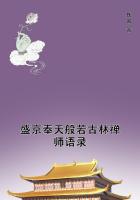Some of us have been attending certain lectures on Egypt and its antiquities. I have never been on the Nile. If in any future state there shall be vacations in which we may have liberty to revisit our old home, equipped with a complete brand-new set of mortal senses as our travelling outfit, I think one of the first places I should go to, after my birthplace, the old gambrel-roofed house,--the place where it stood, rather, -- would be that mighty, awe-inspiring river.
I do not suppose we shall ever know half of what we owe to the wise and wonderful people who confront us with the overpowering monuments of a past which flows out of the unfathomable darkness as the great river streams from sources even as yet but imperfectly explored.
I have thought a good deal about Egypt, lately, with reference to our historical monuments. How did the great unknown mastery who fixed the two leading forms of their monumental records arrive at those admirable and eternal types, the pyramid and the obelisk? How did they get their model of the pyramid?
Here is an hour-glass, not inappropriately filled with sand from the great Egyptian desert. I turn it, and watch the sand as it accumulates in the lower half of the glass. How symmetrically, how beautifully, how inevitably, the little particles pile up the cone, which is ever building and unbuilding itself, always aiming at the stability which is found only at a certain fixed angle! The Egyptian children playing in the sand must have noticed this as they let the grains fall from their hands, and the sloping sides of the miniature pyramid must have been among the familiar sights to the little boys and girls for whom the sand furnished their earliest playthings.
Nature taught her children through the working of the laws of gravitation how to build so that her forces should act in harmony with art, to preserve the integrity of a structure meant to reach a far-off posterity. The pyramid is only the cone in which Nature arranges her heaped and sliding fragments; the cone with flattened Surfaces, as it is prefigured in certain well-known crystalline forms. The obelisk is from another of Nature's patterns; it is only a gigantic acicular crystal.
The Egyptians knew what a monument should be, simple, noble, durable.
It seems to me that we Americans might take a lesson from those early architects. Our cemeteries are crowded with monuments which are very far from simple, anything but noble, and stand a small chance of being permanent. The pyramid is rarely seen, perhaps because it takes up so much room; and when built on a small scale seems insignificant as we think of it, dwarfed by the vast structures of antiquity. The obelisk is very common, and when in just proportions and of respectable dimensions is unobjectionable.
But the gigantic obelisks like that on Bunker Hill, and especially the Washington monument at the national capital, are open to critical animadversion. Let us contrast the last mentioned of these great piles with the obelisk as the Egyptian conceived and executed it.
The new Pharaoh ordered a memorial of some important personage or event. In the first place, a mighty stone was dislodged from its connections, and lifted, unbroken, from the quarry. This was a feat from which our modern stone-workers shrink dismayed. The Egyptians appear to have handled these huge monoliths as our artisans handle hearthstones and doorsteps, for the land actually bristled with such giant columns. They were shaped and finished as nicely as if they were breastpins for the Titans to wear, and on their polished surfaces were engraved in imperishable characters the records they were erected to preserve.
Europe and America borrow these noble productions of African art and power, and find them hard enough to handle after they have succeeded in transporting them to Rome, or London, or New York. Their simplicity, grandeur, imperishability, speaking symbolism, shame all the pretentious and fragile works of human art around them. The obelisk has no joints for the destructive agencies of nature to attack; the pyramid has no masses hanging in unstable equilibrium, and threatening to fall by their own weight in the course of a thousand or two years.














